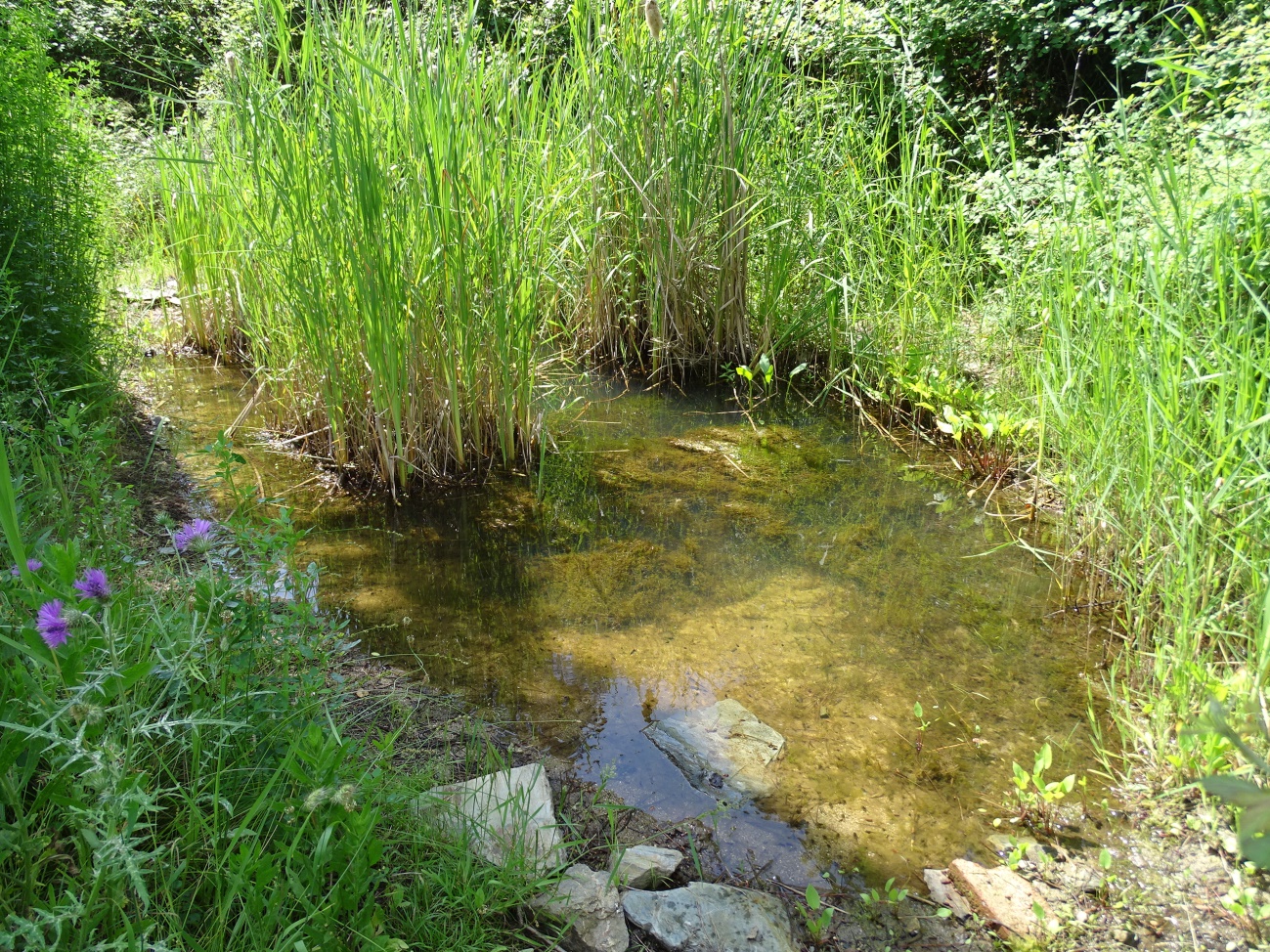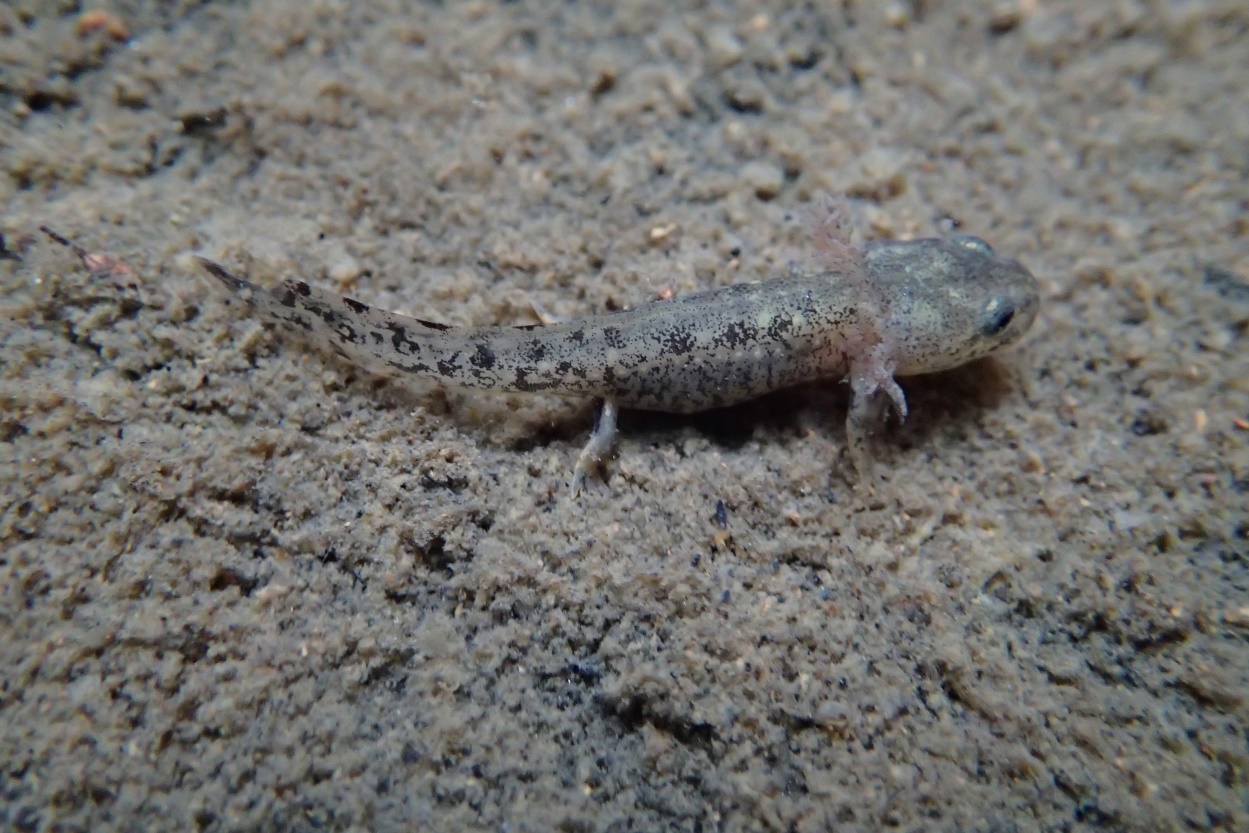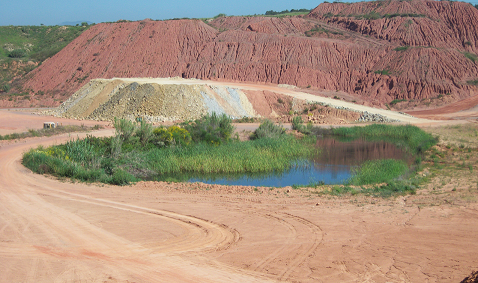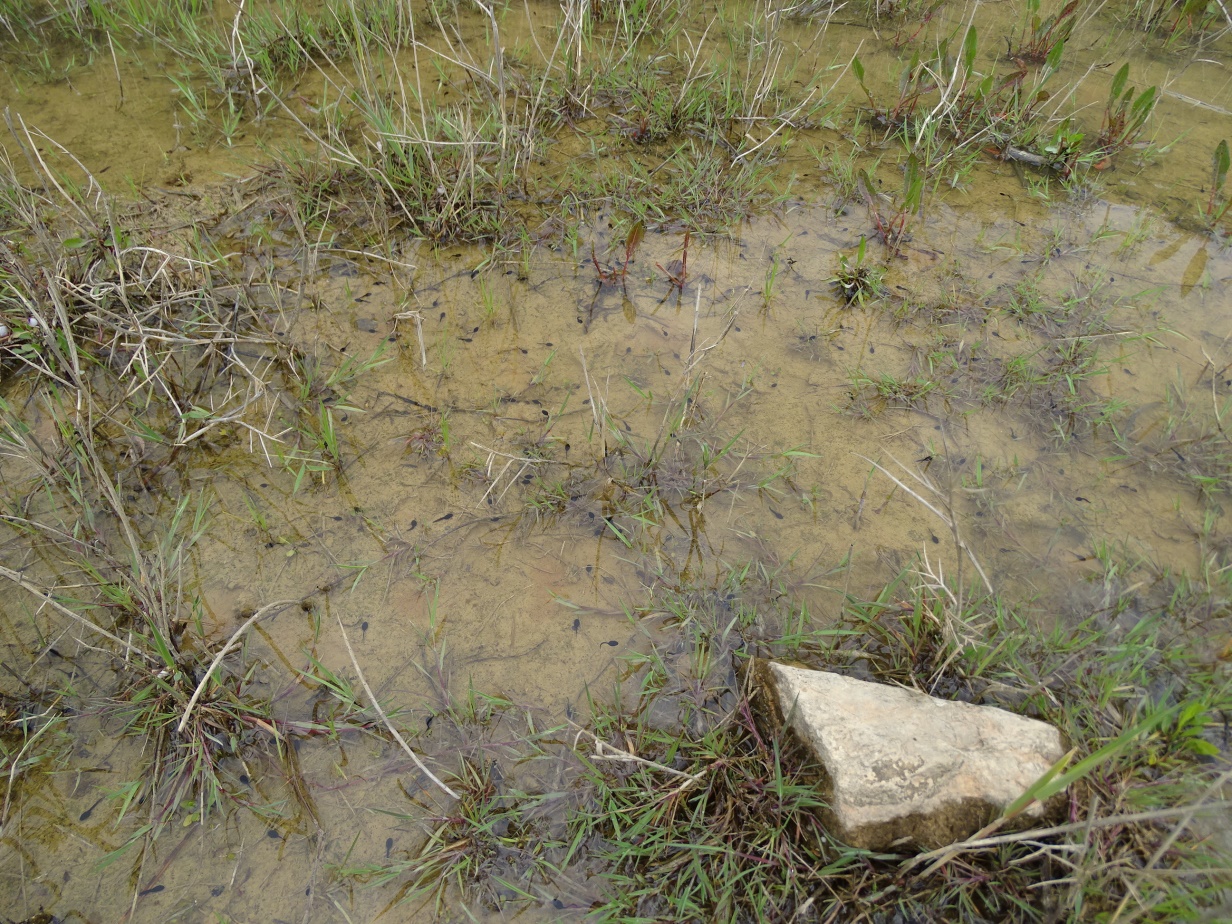Case Study
Pond management for the conservation of amphibians in Collserola Natural Park
Contact name
Seán Cahill
Institution name
Consorci del Parc natural de la Serra de Collserola
Region & country
Catalonia, Spain
Summary
Recent decades have seen important declines in amphibian populations around the world, mainly as a response to a combination of factors mostly related to habitat fragmentation, destruction and alteration caused by humans, with urbanization being especially detrimental to herpetofauna generally.
In coastal Mediterranean areas, land use change has been particularly intense, and abandonment and degradation of ponds traditionally used by farmers and herders has reduced potential breeding sites. As such, in the Collserola Natural Park, efforts at conserving amphibian populations corresponding to its eight native species have focused on improving the quantity and quality of standing freshwater habitats.

The small artificial pond created beside the park’s Biological Station at Can Balasc has proved itself to be a very successful breeding site for the Mediterranean tree frog (Hyla meridionalis).

Larva of a fire salamander in a small fountain at the Font Groga Partial Nature Reserve, Collserola Natural Park.

Adequate management of naturalized ponds during quarry restoration projects can provide vital habitat for waning amphibian populations.

The presence of temporary seasonal pools is essential for the breeding of certain species such as the natterjack toad (Epidalea calamita).
Background of the project
As well as naturally occurring freshwater bodies, in Mediterranean landscapes, amphibians have long relied on the use of small artificial ponds as suitable breeding sites. Such ponds were traditionally associated with small farms, where they were used either for irrigation or as watering holes for herds.
Collserola Natural Park is situated within the Barcelona metropolitan area, in a region which has experienced exceptional rates of land use change and urbanization over the last 50 years. As a consequence, many farms either no longer maintain agricultural activity, or have simply disappeared altogether, with the subsequent loss of small traditional ponds sites.
Likewise, other factors, such as increased aridity due to climate change, are reducing the availability of natural standing water habitats, including those of both temporal and permanent sites. Also, nearby urbanization has facilitated the introduction of alien invasive fauna, such as fish and crayfish, into remaining water bodies, thus further degrading freshwater habitat for native amphibians.
In Collserola, the presence of major infrastructure acts as a barrier to the movement of amphibians. The resulting fragmentation of non-breeding habitats and the reduced connectivity between breeding sites impede natural recolonization after population losses at local scales, thus lowering thresholds for extinction under existing metapopulation dynamics.
Solution and actions taken
In recent years, work has been carried out in the Collserola Natural Park both on the creation of new ponds as well as the rehabilitation of existing ones. Likewise, the regular removal of invasive species from such ponds forms an integral part of their ongoing maintenance.
An initial inventory helped to identify and characterize the presence of existing ponds and other standing water bodies and temporary pools with regard to their suitability as potential breeding sites for amphibians in Collserola, as well as registering the actual presence of the different species at such sites. This information largely formed the basis for subsequent decisions regarding conservation priorities regarding different actions required at amphibian breeding sites.
Over the years, a variety of different measures have been applied to improve the conservation status of amphibian populations within the park:
- Placement of numerous small mini-ponds (aiguaroles) throughout the park, mostly within wooded and naturalized areas.
- Restoration of the Vallvidrera reservoir, an artificial reservoir covering more than 7,000 m2 which historically was noted for the high diversity of its amphibian populations.
- Creation of a small pond close to the Vallvidrera dam to serve as a reservoir habitat during times when the dam might remain empty for maintenance purposes. This pond is currently being replaced by a new and larger pond with the same aim.
- Creation of a permanent pond for amphibians at the park’s Biological Station at Can Balasc, which now contains a healthy population of the Mediterranean tree frog (Hyla meridionalis).
- Creation of a pond at the Can Coll Environmental Education Centre.
- Collaboration with private initiatives with a view to creating pond habitats in different areas around Collserola.
- Adaptation of quarry restoration measures to guarantee the presence of permanent and temporary pools among restored quarry habitats.
- Adaptation of restoration measures at natural drinking fountains located in mountainous areas to ensure the presence of tadpoles and larvae of species such as the midwife toad (Alytes obstetricans) and the fire salamander (Salamandra salamandra).
- Recovery project for the Iberian spadefoot toad (Pelobates cultripes), involving translocation of larvae to suitable ponds undertaken for the park by members of the Catalan Herpetological Society.
- Removal of invasive exotic species of fish, crayfish and tortoises from the Vallvidrera reservoir.
Other institutions or parties involved
- Catalan Herpetological Society;
- CRARC – Catalan Recuperatin Centre of Amphibians and Reptiles
- Galanthus, Environmental Studies and Dissemination
- Aigües de Barcelona (Barcelona Water company);
- University of Barcelona;
- Cemetery Roques Blanques
Results
An increasing network of permanent and temporary ponds, pools and reservoirs has been consolidated, which continues to aid the conservation status of amphibian populations within Collserola Natural Park. Nevertheless, these sites require regular monitoring and maintenance in order to ensure their full potential as adequate breeding sites.
Challenges
- The continued loss, fragmentation and degradation of habitats due to land use change beyond the park’s limits, isolating its populations from those of nearby protected areas.
- The regular introduction of invasive exotic species represents an obstacle to conserving biodiversity in such freshwater habitats and to amphibians in particular. More environmental awareness is required to educate the public on this problem and also the need to sometimes temporarily drain ponds in order to fully restore their health as adequate ecosystems.
- The reduced presence of natural temporary pools as a result of accumulated drought episodes in the context of climate change.
- Avoiding the arrival of deleterious infectious diseases, such as Chytridiomycosis, caused by the chytrid fungus Batrachochytrium dendrobatidis, which can have a severe impact on amphibian populations.
- Being able to ensure the continued presence of traditional ponds through the recovery of farming activities in Collserola Natural Park.
Lessons learned
Conservation efforts should be focused on ensuring a wide variety of potential breeding sites, with regard to both the characteristics (size, permanent, temporary…) and the spatial distribution of ponds and pools, in order to sufficiently meet the different requirements of the numerous species of amphibians to be found in Collserola.
Also, the habitat quality of artificial ponds can evolve rapidly, and thus they require regular monitoring and maintenance.
Nevertheless, the considerable effort required also has considerable spin-off benefits for the high levels of biodiversity associated with healthy freshwater pond and pool ecosystems.
Contact name
Seán Cahill
Institution name
Consorci del Parc natural de la Serra de Collserola
Website(s)
